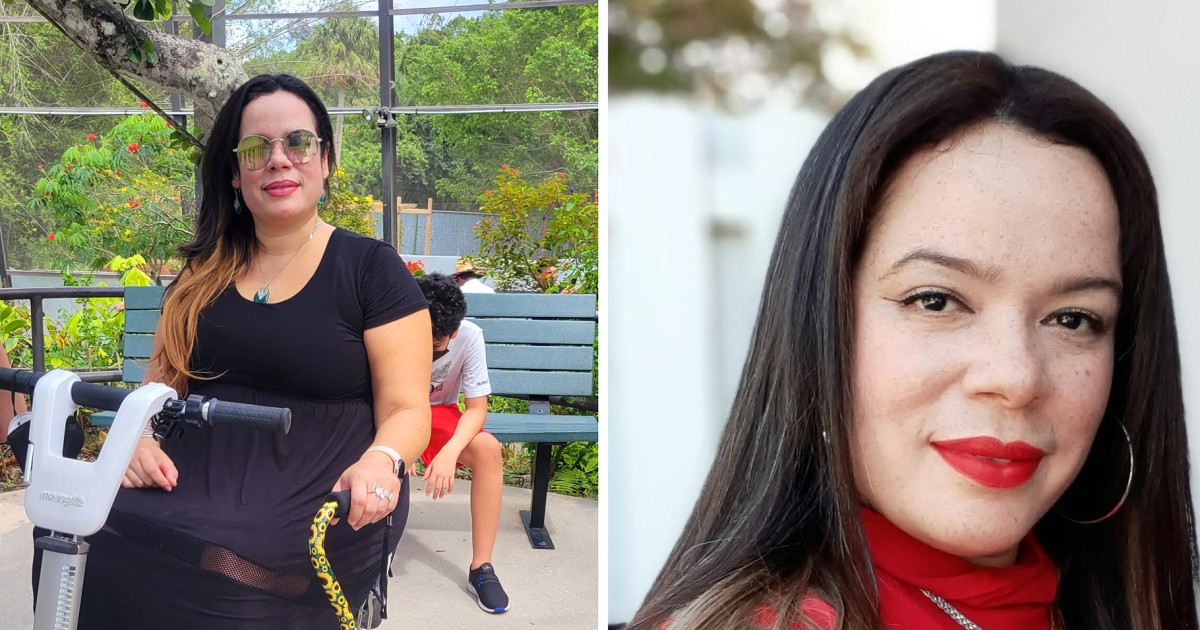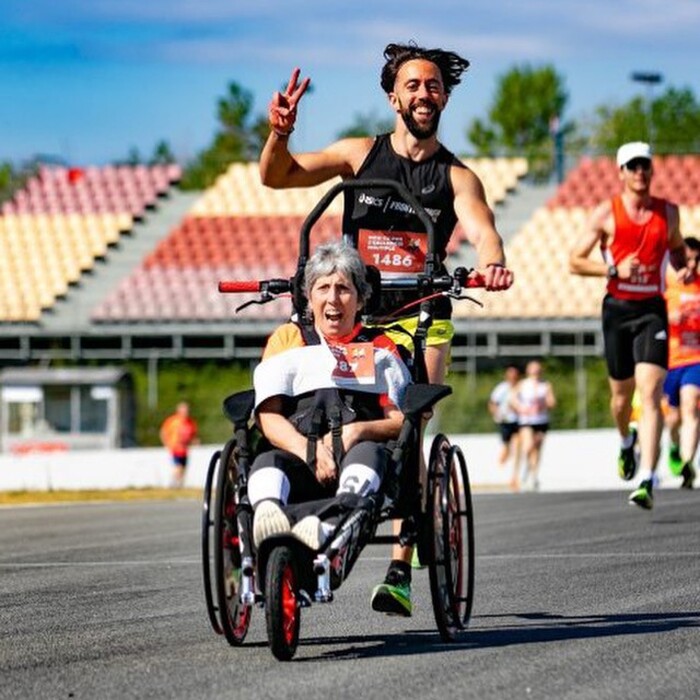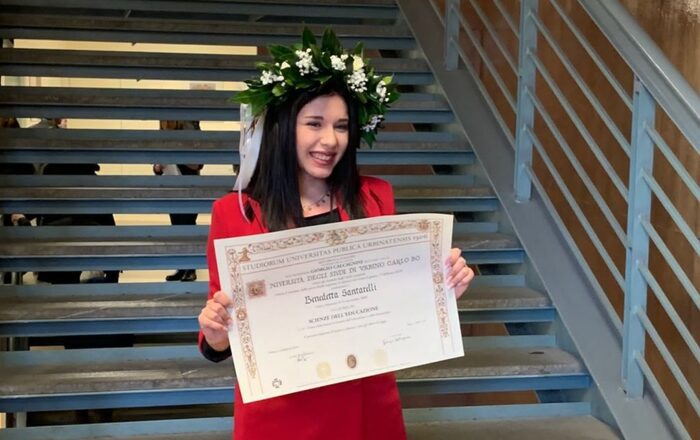Mayteé Ramos remembers the day her body was paralyzed.
He was buying a car eight years ago and suddenly realized he couldn't sign the documents: his hand wasn't responding. As the days went by he began to lose mobility and, in less than a week, he could not move even his toes.
"I had a lot of pain on my right side [...]. I arrived on Friday night and on Sunday they gave me the final diagnosis that it was multiple sclerosis, but at that moment I was completely paralyzed in a bed, "says in an interview with Noticias Telemundo this 46-year-old Puerto Rican who lives in Florida.
Those were the most aggressive symptoms I had experienced until then but they were not the first. "I had symptoms but I didn't know what it was," he says. Connecting the dots, he remembers that before he sometimes felt cramps and pains in his hands, pains in his joints and behind his spine. But being young, active and healthy, she never imagined she could be something more. Multiple sclerosis (MS) is a chronic neurological disease whose first symptoms usually appear between the ages of 20 and 40, and is three times more common in women than in men.
Mayteé Ramos.Courtesy.
After that outbreak she had to learn from scratch even the most basic activities of her day to day, such as brushing her teeth, combing her hair, putting on makeup, dressing, or getting in and out of a car. "I had to learn everything, basically," he says. She was clear that she wanted to be okay, for herself and for her three children, and she recovered almost completely. "I said to myself [myself]: they told me I'm not going to die from this, so what I have to do is work because my kids are small, because I have things to do, because I'm not going to stay in a wheelchair," she thought.
[Is there a trigger for multiple sclerosis? Many believe so, but experts say evidence is lacking]
Latinos Develop Younger MS
Multiple sclerosis is a disease in which immune system cells injure the layer covering neurons in the brain and spinal cord called myelin, according to the National Institutes of Health. There are 2.8 million people living with the disease worldwide, nearly one million of them in the United States. Although to date there is no cure, there are about twenty treatments in the US that slow down its development and help control symptoms.
It was not until recently that research began on the Latino population. And recent years have seen an increase in cases within this population, says Dr. Lilyana Amezcua, an associate professor of neurology at the University of Southern California, who specializes in the disease. A recent study showed that cases increased in Puerto Rico.
Mayteé Ramos.Courtesy
According to Dr. Amezcua, Hispanics have a higher risk of disability and develop the disease at a younger age, in addition to developing twice as many optic neuritis, an inflammation that damages the nerve in the eye.
"Latinos, compared to whites, start with multiple sclerosis three to five years before the [average] age [...] So it is possible that we will see an increase in the coming years of multiple sclerosis in that population, "says Amezcua.
[Why Postpartum Depression Is So Common in U.S. Latina Moms: "I Wanted to Run Away"]
However, cases of multiple sclerosis among Latinos are underestimated, since between 30% and 40% of this population goes to the doctor less than among the white population, according to Amezcua. This is because a large number of Hispanics do not have health insurance because of their immigration status. (About 20% of Hispanics ages 18 to 64 had no health coverage in 2020, nearly twice as many as black adults and three times as many as whites, according to a Kaiser Foundation analysis.)
In addition, less than 1% of studies on multiple sclerosis include the Latino population, often out of distrust, adds the doctor, since many fear that it may affect their immigration status.
"You need to build this trust in people, for people to feel that it's so important for them to participate in research studies to really know if [sclerosis] presents differently depending on race or ethnicity. Or which treatments they can respond to best," warns Andreina Barnola, director of Access to Health Care at the National Multiple Sclerosis Society.
We have no scientific basis by which Latino patients would be biologically protected against multiple sclerosis."
Doctor lUIS mANRIQUE-tRUJILLO
Dr. Luis Manrique-Trujillo says Latinos "are not being properly classified in terms of their race or ethnicity." Manrique-Trujillo participates in research at MedStar Georgetown University Hospital in Washington D.C. on the limitations Hispanic patients have in being diagnosed.
The doctor says there is no reason to believe that Hispanics develop the disease less than white people. "We don't know because we don't have any scientific basis, we don't have any clear reason why Latino or Hispanic patients would be biologically protected or [there is] any specific factor to think that multiple sclerosis does not develop in these patients," he said.
Technology Used in COVID-19 Vaccine Gives Patients Hope for Aggressive Cancer
May 15, 202302:22
What to do in case of symptoms
The progression of the disease changes immediately when the patient begins treatment, says Dr. Amezcua, so the most important thing is to receive a diagnosis as soon as possible.
[Experimental vaccine to halt progression of pancreatic cancer shows promising results]
Within three years of her diagnosis, Ramos began getting involved in support groups for newly diagnosed people of the National Multiple Sclerosis Society and writing about the disease, in addition to leading different awareness projects in Spanish. "Educating yourself about the disease is vital," he warns. "I don't know everything, right, but I'm an expert on my case."
Ramos has a blog where he writes about the disease, a YouTube channel and is the leader of the virtual group Puerto Ricans United for Multiple Sclerosis, although he clarifies that the group is already a mixture of people from different Latino cultures. "Anyone who speaks Spanish and needs support, we are very happy to receive it," he says.
Any of these symptoms can be a warning sign: difficulty walking, numbness in some part of the body, vision or balance problems. If you have any, Dr. Amezcua recommends going to a neurologist to rule out the possibility that it is multiple sclerosis.
The second most important thing is to approach one of the associations that exist in the country and give advice in Spanish, such as the National Multiple Sclerosis Society, the American Multiple Sclerosis Association or the Multiple Sclerosis Foundation. Andreina Barnola encourages people who have been newly diagnosed to approach (by phone, by e-mail or by chat) with one of the professionals who provide information about the disease in Spanish.
Lesions in the brain of a person with multiple sclerosis seen on MRI. Callista Images / Getty Images
Most treatments are usually very expensive but, according to Dr. Amezcua, there are some less expensive ones that are just as effective. If you don't have insurance that covers your treatment, Barnola recommends asking about the pharmaceutical companies' free drug programs. Ramos recommends asking about the charitable programs of large hospitals — such as Memorial Health Care (Florida) — and Dr. Amezcua advises approaching county hospitals.
[See the National Multiple Sclerosis Society's guide to financial assistance for the uninsured here]
"I'm a trooper"
Although she battles her symptoms every day, Ramos doesn't give up. "I am a trooper as they say, I am a person of action, I am very active and although I am dragging, I keep going. It's hard because I fight my own body," she says, "MS is like a full-time job."
Coming into contact with people living with the disease has been important to her over the years. "You have to find your tribe, connect with people who understand because we speak the same language." "Being part of a community helps you heal emotionally and even physically, because you feel good, you are accepted," he says.
Christina Applegate received her star on the Hollywood Walk of Fame
Nov. 15, 202201:00
Dr. Manrique-Trujillo sends an encouraging message to people with this disease. "If we manage to diagnose and treat it early, the panorama of this disease is absolutely distant from what it was 20 or 30 years ago," when the wheelchair was a reality for many patients.








